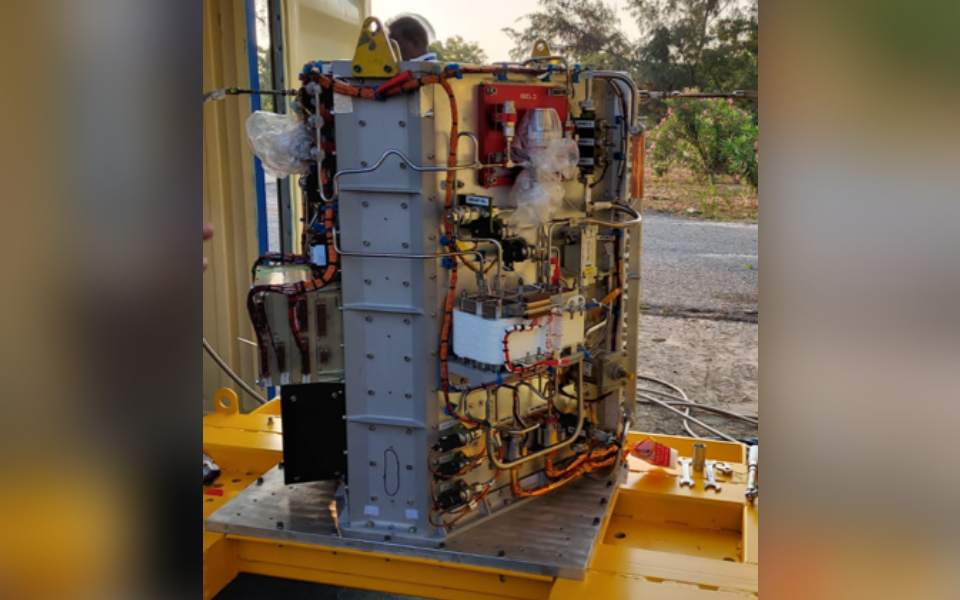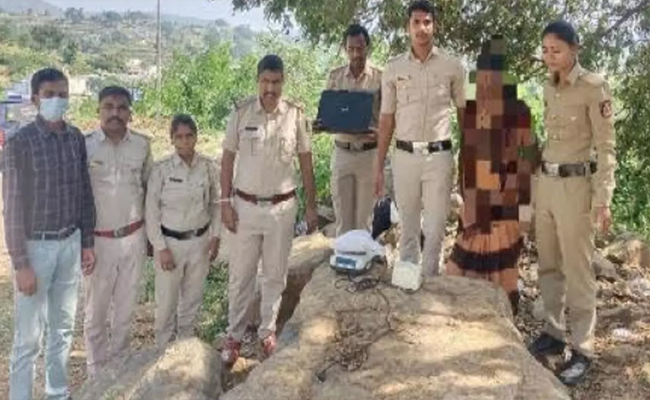Bengaluru, Jan 5: ISRO on Friday said that it has successfully flight-tested a fuel cell to assess its operation in space and to collect data to facilitate the design of systems for future missions.
Powering missions with efficiency and emitting only water, these fuel cells are the future for power production in space habitats, the national space agency headquartered here said.
Vikram Sarabhai Space Centre/ISRO successfully tested a 100 W class Polymer Electrolyte Membrane Fuel Cell based Power System (FCPS) in its orbital platform POEM3, launched onboard PSLV-C58 on January 1.
"The objective of the experiment was to assess Polymer Electrolyte Membrane Fuel cell operation in space and to collect data to facilitate the design of systems for future missions," ISRO said in a statement.
During the short duration test onboard POEM, 180 W power was generated from Hydrogen and Oxygen gases stored onboard in high pressure vessels.
"It provided a wealth of data on the performance of various static and dynamic systems that formed part of the power system and the physics at play," the space agency said.
Hydrogen fuel cells produce electricity directly from Hydrogen and Oxygen gases, along with pure water and heat. It is an electric generator which works on electrochemical principles, as in batteries, as against the combustion reactions employed in conventional generators, it was noted.
The ability to produce electricity directly from fuels without any intermediate step renders it very efficient. With water as the only byproduct, they are totally emission-free. These features make them ideal candidates for space missions involving humans where electric power, water and heat are essential, since a single system can meet multiple requirements in the mission, according to ISRO.
Fuel cells also possess significant societal application potential. They are also considered to be the most appropriate solution to replace the engines of various types of vehicles in use today and to power standby power systems.
They can provide a range and fuel recharge time equaling that of today's conventional engine, which gives them a distinct advantage over batteries, and are expected to facilitate emission-free transportation.
Fuel cell is an ideal power source for the space station as it provides both power and pure water, ISRO added.
POEM-3 on PSLV-C58:
— ISRO (@isro) January 5, 2024
VSSC/ISRO successfully tests a 100 W class Polymer Electrolyte Membrane Fuel Cell on PSLV-C58's orbital platform, POEM3.https://t.co/f5SGqh1ZUR
Powering missions with efficiency and emitting only water, these fuel cells are the future for power production in… pic.twitter.com/lCbsZF9UIB
Let the Truth be known. If you read VB and like VB, please be a VB Supporter and Help us deliver the Truth to one and all.
Bengaluru: Vidyaranyapura police have arrested four persons, including a man posing as a Police Sub-Inspector (PSI), for allegedly breaking into a house, threatening the occupants, and extorting money while wearing police uniforms.
The arrested accused have been identified as Mallikarjuna, Pramod, Vinay, and Hrithik.
Police said the accused had hatched a plan to pose as police personnel, conduct fake raids, and extort money from residents by intimidation.
ALSO READ: Bantwal police arrest two men for illegal sale of narcotics, seize two vehicles, 810 gm ganja
According to the police, Mallikarjuna had failed the PSI examination twice and later falsely projected himself as a PSI. He allegedly conducted photo shoots in his hometown, Siraguppa, wearing a police uniform, baton, cap, and shoes, claiming to be serving as a PSI in Bengaluru.
On December 7, the four accused allegedly went to the house of Naveen in the Vidyaranyapura limits, threatened him with a stick and an iron rod, and claimed they had information that he was selling ganja. Under the pretext of searching, they allegedly extorted ₹87,000 through bank transfer, ₹53,000 in cash kept in the house, and ₹2,000 from his wallet.
Following Naveen’s complaint, Vidyaranyapura police registered a case and launched an operation, leading to the arrest of all four accused. Police have seized ₹45,000 in cash and the car used to commit the crime.
Further investigation is underway.





